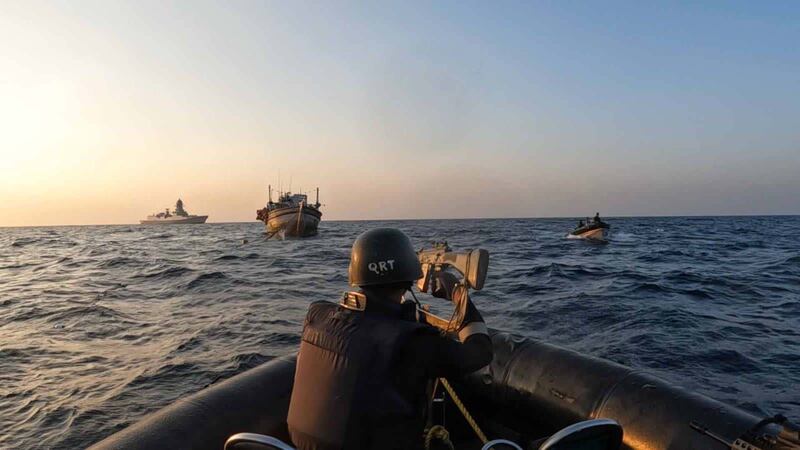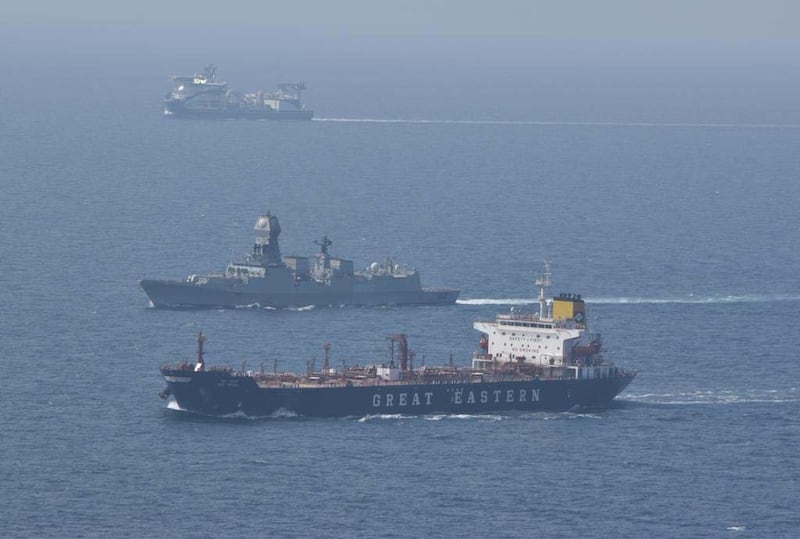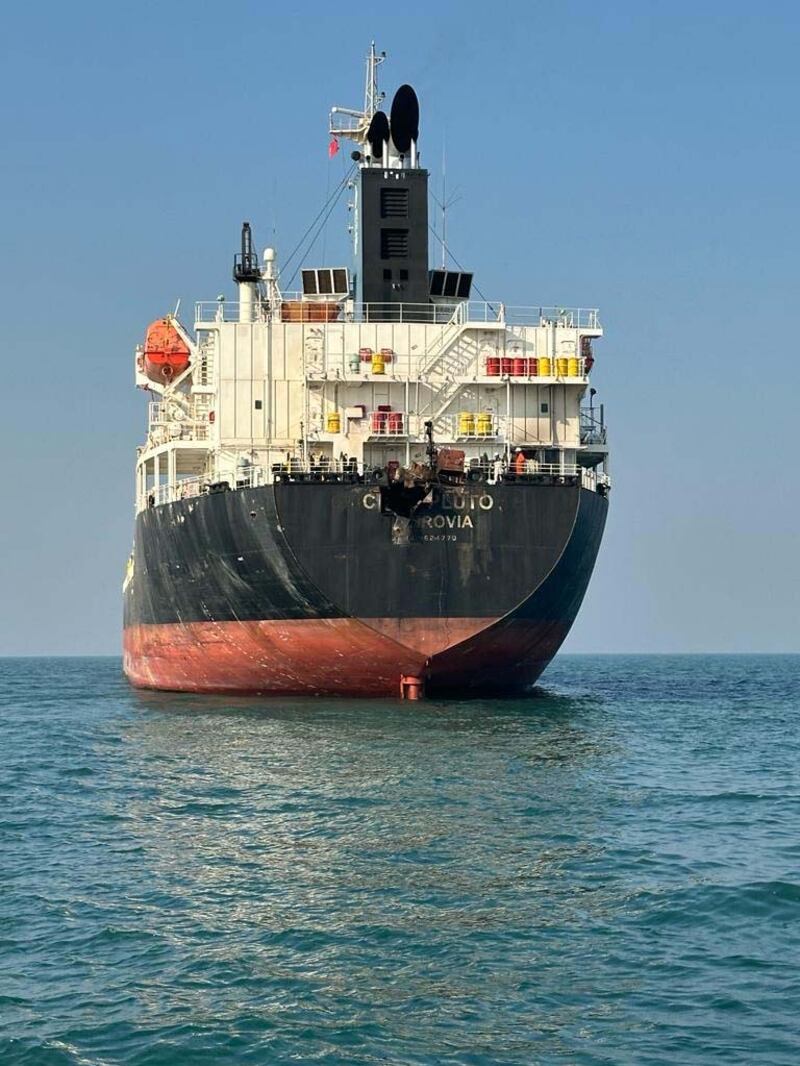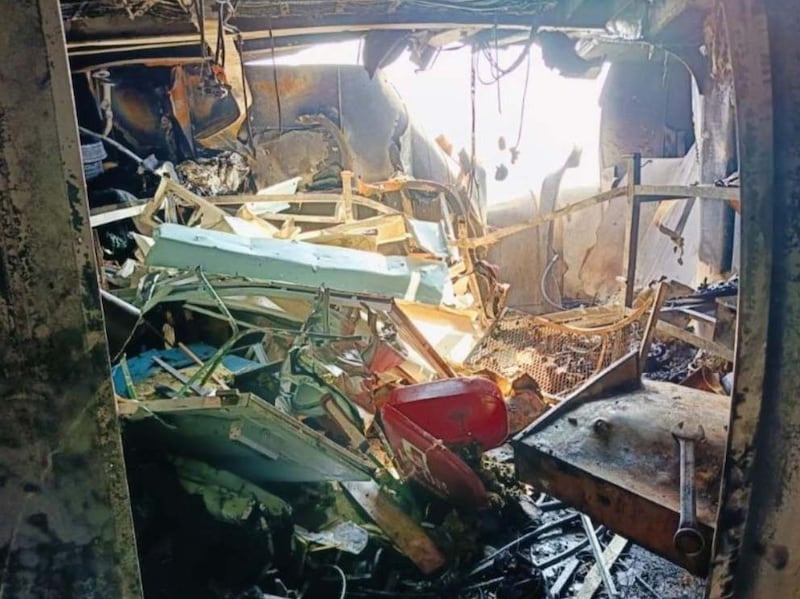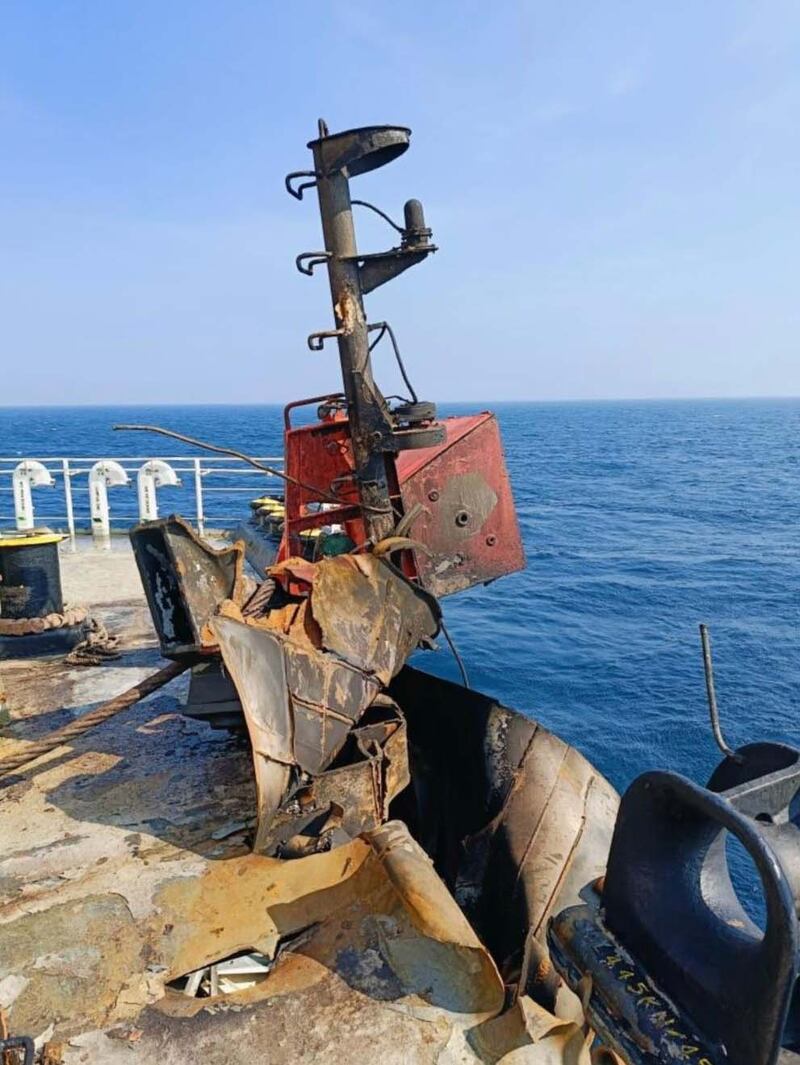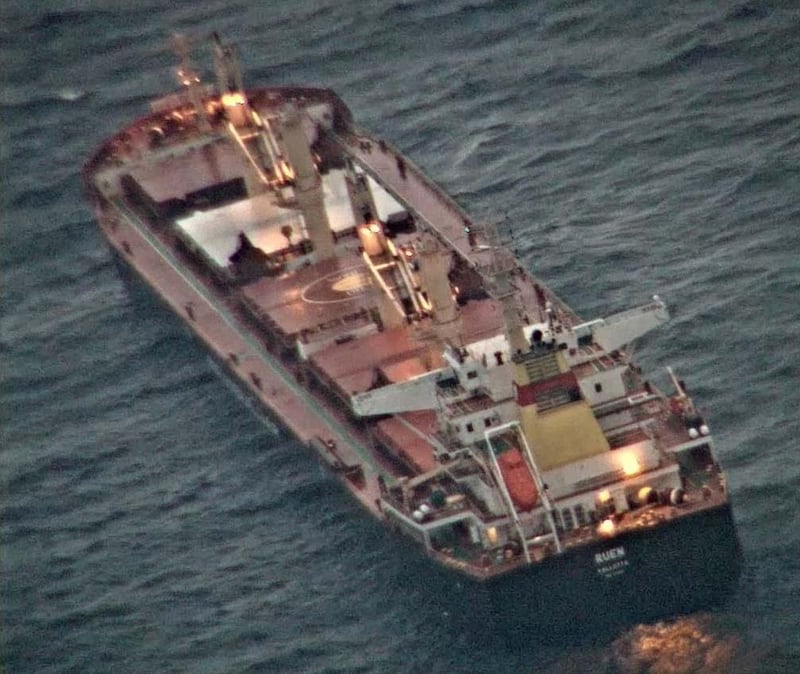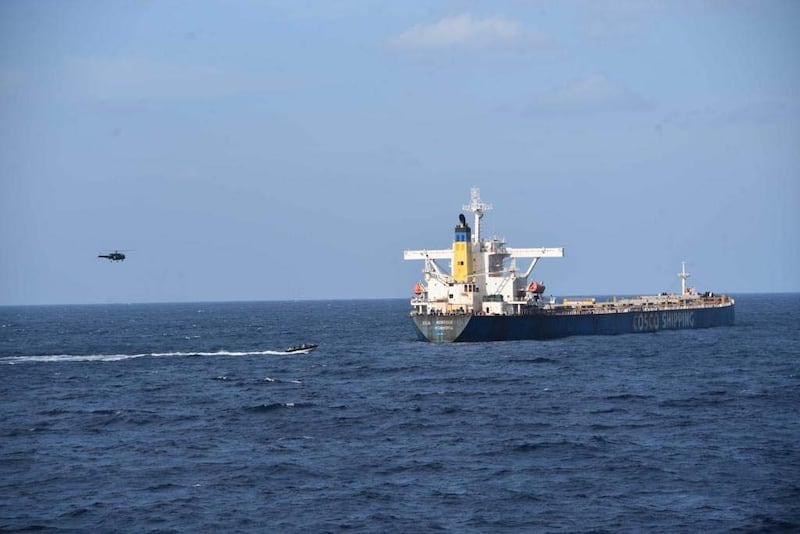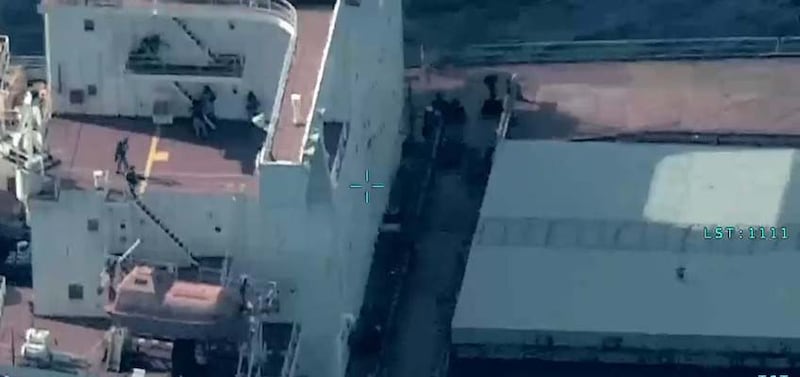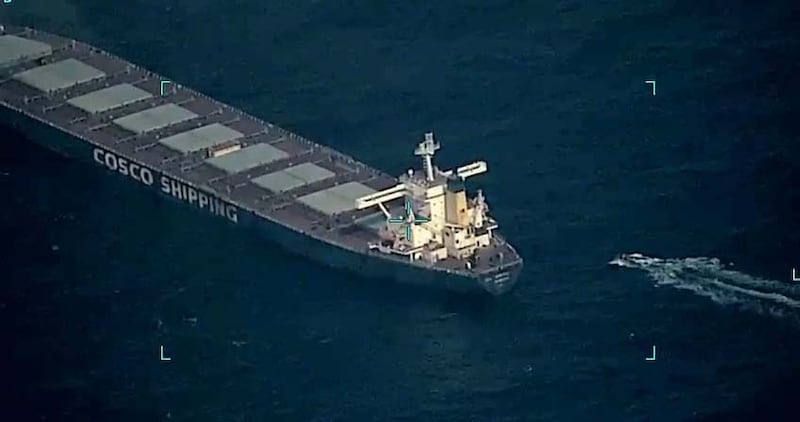The Indian Navy has sent more than 10 warships in addition to surveillance aircraft to assist merchant vessels travelling through the Gulf of Aden and central and northern areas of the Arabian Sea.
India says this is in response to attacks close to key special economic zones on the country’s western coast.
Global supply chains have been disrupted after attacks by Houthi rebels in Yemen and Somali pirates have forced shipping companies away from the Red Sea, one of the world’s busiest trade routes.
India’s decision will strengthen naval surveillance in the region and add to intensified patrols with other countries after Europe and the US sent frigates and warships to high-risk areas.
“There has been a requirement to augment our surveillance and patrol efforts. From MV Ruen in December onwards we have continuously enhanced the presence of our warships in the region,” navy spokesman Commander Vivek Madhwal told The National, referring to the December hijacking of a Malta-flagged vessel with 18 crew in the Arabian Sea after a six-year lull in Somali piracy.
“Our ships are deployed so our reaction time to any developing situation is minimised to ensure a better security environment for marine traffic which is moving in and out of the region.
“These are regions of great importance. The Indian Navy continues to monitor the maritime security situation in the north and central Arabian Sea and the Gulf of Aden.
"Ships and aircraft remain mission deployed for enhanced surveillance and to undertake maritime security operations."
The Navy has sent guided missile destroyers including INS Kochi, INS Kolkota, INS Narmada, INS Chennai, INS Visakhapatnam and INS Mormugao and the frigate INS Talwar, as well as maritime reconnaissance aircraft and armed drones.
This is in addition to long-range surveillance patrol aircraft and helicopters attached to warships.
Too close to key economic zones
There will be a further deployment of destroyers and frigates after “increased maritime security incidents on merchant vessels transiting through international shipping lanes”, India’s Defence Ministry said.
Over the past two months, commandos and naval officers have intervened to assist cargo and container ships in at least four piracy and drone attacks.
The ministry said the pirate attack on MV Ruen was about 1,300km from the Indian coast and the drone attack on MV Chem Pluto about 400km from India’s south-west coast, indicating “a shift in maritime incidents closer to the Indian EEZ [exclusive economic zone]".
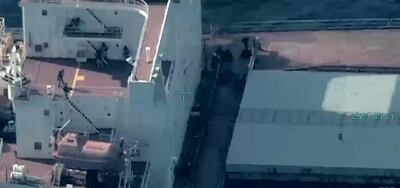
The drone that struck MV Chem Pluto, a Liberian-flagged, Japanese-owned chemical tanker travelling from Saudi Arabia to India sparked a fire onboard on December 23.
The Indian Navy said it responded quickly to ensure the crew of 21 Indians and a Vietnamese sailor were safe and escorted the vessel to Mumbai to repair damage to the ship.
The navy has said it is committed to being a “first responder” in the region to ensure “the safety of merchant shipping, along with international partners and friendly foreign countries”.
During the MV Ruen hijacking, naval forces removed an injured sailor from the vessel. The sailor was hurt during the pirate attack and was transferred by the navy to Oman for medical attention.
In the most recent piracy incident, on January 5, the navy intercepted Liberian-flagged bulk carrier MV Lila Norfolk, compelling the pirates to flee, and freed 21 crew on board.
“Within a couple of hours of the incident being reported, we had an aircraft overhead, established communication and issued the necessary warnings,” Commander Madhwal said.
“This is something that highlights the presence and operational tempo the Indian Navy is operating under right now.”
High-risk areas widen
The presence of multinational naval forces helped curtail the spread of Somali piracy that from 2008 surged for more than a decade.
The high-risk areas during that time expanded eastwards from Bab Al Mandeb – the strait between the Red Sea and the Gulf of Aden – towards India. The pirates were gradually pushed back through the sustained presence and efforts of multinational forces around the Gulf of Aden and the Indian Navy in the Arabian Sea.
During the height of piracy the Indian Navy, like other forces, escorted merchant vessels through dangerous waters.
Asked if the navy would do so again, Commander Madhwal said: “Our ships are fully ready to carry out escort where there is higher risk of piracy or hijacking attempts.
“The Indian Navy has provided escort in the past and these measures can be undertaken as and when required.”
Houthi attacks hit $3 billion worth Indian exports each month
The Houthi rebels in Yemen have stepped up attacks on shipping after the outbreak of the Israel-Gaza war in October.
The attacks led the US to launch Operation Prosperity Guardian, a naval coalition of 20 countries including the UK, Canada, Greece and Denmark.
India is one of the countries, including France and Italy, that are part of existing international naval operations, and have sent warships to the region and enhanced surveillance to protect shipping routes, but have not formally joined the US coalition.
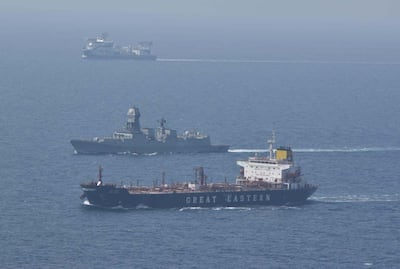
The Houthis have targeted vessels transporting goods through Bab Al Mandeb and the Red Sea to reach Egypt’s Suez Canal.
The fear of attacks has led shipping companies to divert vessels to a much longer route around the Cape of Good Hope, adding about 10 days to the journey, and pushing up costs by billions of dollars.
The additional distance has resulted in increasing freight rates and delays to consignments.
“Ships are not operating in the Red Sea and instead going through the longer route and this is affecting the entire supply chain both for exports and the imports,” said Ajay Sahai, director general of the Federation of Indian Export Organisations.
“This has an impact on freight costs, [while] the availability of vessels and containers may also come under pressure because entire shipping schedules have gone haywire.”
He estimates the effect to be about $3 billion a month on Indian exporters due to the delays.
“All the sailings expected this week have been postponed by a minimum of two to three weeks,” Mr Sahai said.
“This kind of disruption at a time when we are already having huge global headwinds is bound to have an impact on trade.
“There may be an impact of about $3 billion every month with a rolling over of exports that have been delayed in January and will now come in during February.
“Imports that were supposed to land in India in the second half of December will now land in January.”
Restoring confidence
The Bab Al Mandeb, just 32 kilometres wide, is a vulnerable point for ships passing Yemen's coast along the route from the Indian Ocean to the Red Sea and on to the Suez Canal.
Millions of barrels of oil are shipped daily along this route, as well as container ships stacked with consumer goods.
“For India, a lot of petroleum products to Europe go through this route and it’s used to export cereal, basmati and non-basmati rice,” Mr Sahai said.
“Containers carrying engineering goods, textiles and footwear also pass through the strait.”
With the security situation in the Red Sea still uncertain, Indian exporters are holding back on sending about 25 per cent of their cargo shipments that would normally have passed through the Red Sea.
“We are already seeing a dip in exports and imports,” Mr Sahai said.
Despite the increased protection from naval forces, it will take time to restore the confidence of shipping companies, Mr Sahai said.
It also remains to be seen whether the US and UK strikes on the Houthis' attack capabilities on Friday will halt their attacks.
“Countries' navies are providing security, protecting territorial waters and we hope there will be a solution soon,” Mr Sahai said.
“But once there is a disruption, it will take roughly another 45 to 60 days to bring things to normal.
“Companies will not start operations all together on one day, some may come forward, some may say let us watch and if there is no incident in 10 days then we will take a call.”
“It will take much more time to restore confidence in shipping lines.”
